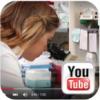Support

5 Cell Culture Rules
Tips to optimize primary cell health & data

Primary Cell FAQs
Tips to culture, store, thaw, grow & subculture

Cell Biology Video Playlists
Viability, migration, fluorescence & live cell

Primary Cell Video
Culture, protocols, guidance & tips

Insights on Cell Culture
The case for primary cells

Transfection FAQ
Polypeptide supplement for cell culture

Media Selection Guide
Choose the right medium for the job

Western Blot FAQ
Optimize results with antibodies

Human iPSC FAQ
Q&A for Induced Pluripotent Stem Cells

Why Primary Cells?
A top choice for research & pharma